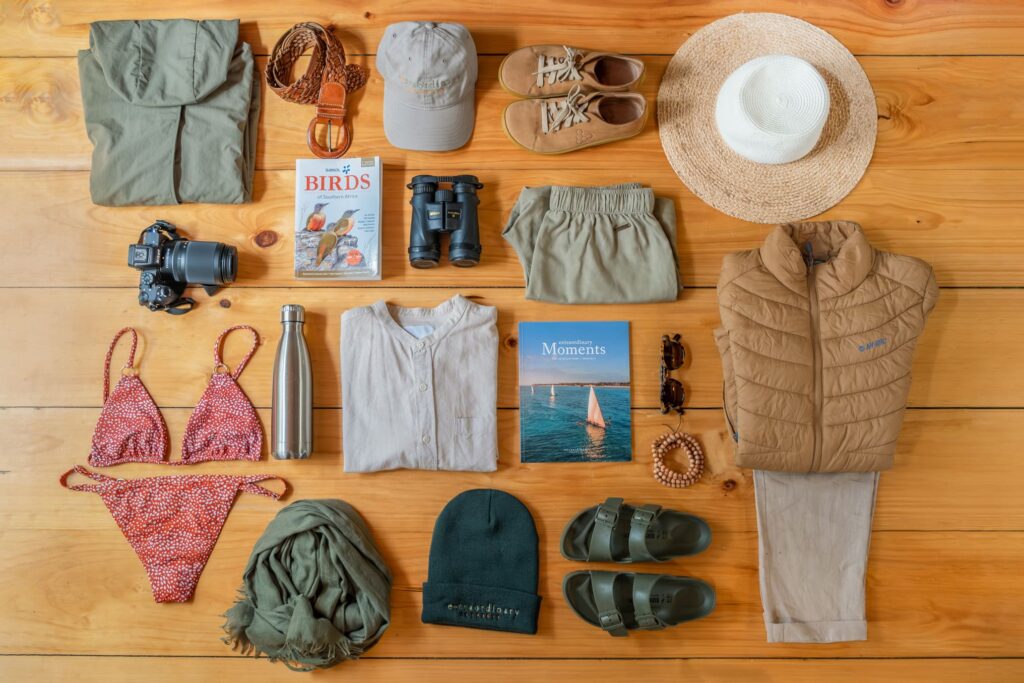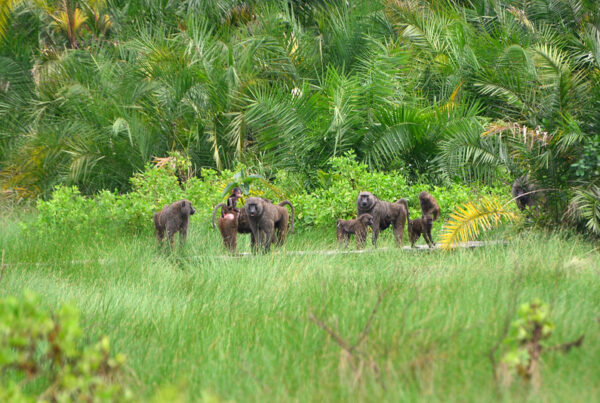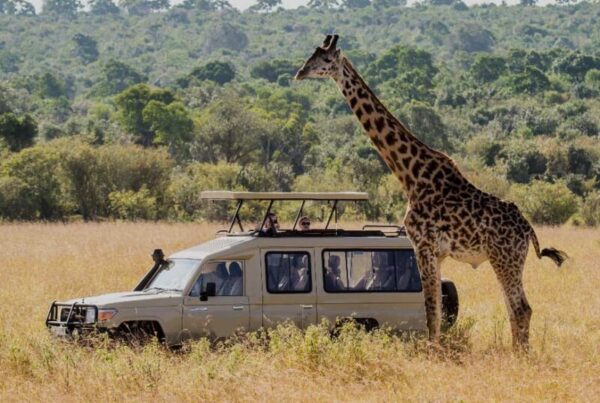What Should I Pack for a Safari in Uganda? | Complete 2026 Uganda Travel & Packing Guide
Few adventures rival the experience of a safari in Uganda — where golden savannahs merge with misty jungles, and where every sunrise holds the promise of discovery. The anticipation of seeing mountain gorillas in the dense forests of Bwindi, watching elephants gather by the Kazinga Channel, or hearing the roar of Murchison Falls fills the traveler’s mind with excitement. Yet before setting foot in this enchanting land, there is one essential step that shapes the comfort, safety, and enjoyment of your entire journey — knowing what to pack for your Ugandan safari.
Packing for a safari is both an art and a science. It requires balance between preparation and practicality, between comfort and respect for the environment. Uganda’s diverse climate and terrain mean that travelers will encounter everything from humid forests and dusty plains to cool mountain air and tropical rains — sometimes all within a single week. Choosing the right clothing, gear, and essentials ensures that your safari is not only seamless but deeply rewarding.
This comprehensive guide explores what to wear, what to bring, and why each item matters, offering a detailed understanding of how to prepare for one of Africa’s most magical destinations.
Understanding Uganda’s Climate and Terrain
Before deciding what to pack, it is important to understand the geographical and climatic diversity that defines Uganda. Unlike many single-terrain safari destinations, Uganda offers multiple ecosystems — open savannah, tropical rainforest, volcanic highlands, and freshwater lakes — all within manageable travel distances.
The country’s location along the equator gives it a generally mild and temperate climate, but local variations can be significant. The western highlands and Bwindi Impenetrable Forest are cooler and wetter, while the northern plains of Kidepo and eastern regions near Mount Elgon are drier and warmer.
Uganda experiences two rainy seasons — roughly from March to May and September to November — and two relatively dry periods from December to February and June to August. However, even during the dry seasons, occasional showers can occur, especially in forested regions.
This variability makes layered packing essential. Clothing and gear must be versatile enough to adapt to shifting conditions — the crisp morning chill of a gorilla trek, the mid-day heat of a game drive, and the evening cool by a campfire. Understanding these dynamics helps ensure that every item in your bag serves a purpose.
Clothing for the Ugandan Safari: Comfort Meets Practicality
The most fundamental rule of safari clothing in Uganda is comfort, modesty, and neutrality. The goal is not fashion but functionality — clothing that protects against sun, insects, and weather while allowing freedom of movement and blending with the natural environment.
Lightweight, breathable fabrics such as cotton or moisture-wicking synthetics are ideal for the daytime, while warmer layers become indispensable after sunset. Neutral tones — khaki, olive, beige, or brown — are preferred because they reflect heat, minimize visibility to wildlife, and hide dust. Bright colors can disturb animals or attract insects, and dark shades like black or navy tend to draw tsetse flies, especially in wooded or swampy areas.
For game drives, long-sleeved shirts and trousers offer protection from both the sun and insects while keeping dust at bay. Convertible safari pants that zip off into shorts provide flexibility for changing conditions. Wide-brimmed hats shield the face and neck, and lightweight scarves help protect against dust and sunburn.
During gorilla or chimpanzee trekking, clothing choices become even more crucial. The terrain is steep, muddy, and densely vegetated, so sturdy trekking trousers, long-sleeved shirts, and gaiters are essential to guard against thorny plants and insects. A waterproof jacket or poncho becomes invaluable in rainforest environments, where rain can fall without warning. Gloves with grip are also helpful when grabbing vines or tree trunks for support.
Evenings in Uganda, particularly in high-altitude regions, can be surprisingly cool. A fleece or light sweater ensures warmth during outdoor dinners or campfire gatherings. For early morning safaris, layering with a jacket that can be removed as the sun rises offers comfort without bulk.
While luxury lodges may have relaxed dress codes for meals, simplicity remains key. Casual attire, clean and comfortable, aligns perfectly with Uganda’s relaxed yet respectful cultural tone.
Footwear: The Foundation of Every Journey
Few items influence a safari experience as much as the right footwear. Uganda’s terrain demands shoes that balance comfort, grip, and protection.
For forest trekking — especially when visiting gorillas or chimpanzees — sturdy waterproof hiking boots are essential. The paths are often steep and muddy, and the right boots provide both ankle support and traction. They should be broken in well before travel to prevent blisters during long hikes.
For game drives and lodge stays, lighter shoes such as trail sneakers or closed-toe walking shoes suffice. In the evenings or during relaxed moments around camp, comfortable sandals or slip-ons are ideal. However, open shoes should not be worn in forested or insect-prone areas.
Waterproof footwear or quick-dry sandals also come in handy for boat rides or activities near wetlands like the Kazinga Channel or Murchison Falls.
Each pair serves a distinct purpose, but all share one quality: reliability. Shoes in Uganda are not just accessories — they are your connection to the earth beneath your feet, guiding every step through nature’s heart.
Essential Safari Gear: Tools of Exploration
Beyond clothing, the gear you pack defines how fully you experience Uganda’s wild beauty. The right equipment transforms observation into understanding and ensures that every moment — from the flutter of a bird to the expression of a gorilla — is seen clearly and remembered vividly.
A pair of high-quality binoculars is indispensable for wildlife viewing. Uganda’s diverse habitats make it a paradise for birdwatchers, with over 1,000 species to spot. A good pair of 8×42 binoculars allows travelers to appreciate detail without carrying excessive weight.
A camera with a telephoto lens is equally vital. Whether capturing elephants crossing the Nile or mountain gorillas in soft morning light, a zoom lens (200–400mm range) offers flexibility without compromising quality. Spare batteries, memory cards, and a protective camera bag should always accompany your photography gear.
For forest treks, a small waterproof daypack carries essentials such as water, snacks, and rain gear. A hydration bladder or water bottle ensures consistent hydration, especially on long hikes. Uganda’s temperatures can rise quickly, and dehydration can reduce stamina.
A flashlight or headlamp proves useful in remote lodges where power may be limited or during early morning starts. Compact and reliable, it also serves as a safety tool for walking between tents after dark.
Other important items include insect repellent, sunscreen, a reusable face mask or scarf for dust, and a compact first-aid kit. These small details often make the difference between comfort and discomfort on safari.
Rain Protection: The Equatorial Reality
Even in the dry season, Uganda’s weather retains an element of surprise. A drizzle can turn into a downpour within minutes, especially in forest zones such as Bwindi or Kibale. Therefore, rain protection is not optional — it is essential.
A lightweight rain jacket or poncho should always be within reach, even on sunny mornings. For trekkers, waterproof trousers and gaiters help navigate slippery paths without getting drenched. Lodges often provide umbrellas, but carrying your own compact one ensures independence.
Plastic zip-lock bags or dry sacks are invaluable for protecting electronics, documents, and maps. In Uganda, staying dry is not just about comfort; it preserves energy and morale during long outdoor excursions.
Accessories That Enhance the Experience
Safari packing extends beyond survival — it includes the small luxuries that elevate comfort and convenience. Sunglasses with UV protection shield eyes from glare, especially near water bodies. A wide-brimmed hat not only protects from the sun but adds to the safari aesthetic.
A lightweight scarf or bandana serves multiple purposes: as protection against dust, warmth in cool mornings, or even a cover for sensitive skin during strong sunlight. Quick-dry towels and moisture-absorbing travel clothing simplify laundry during multi-day trips.
Insect protection is vital in Uganda’s tropical climate. In addition to repellents containing DEET or picaridin, wearing long-sleeved shirts and tucking trousers into socks reduces exposure. Most lodges provide mosquito nets, but travelers should always ensure they are used properly each night.
For travelers visiting higher altitudes or cooler regions, a lightweight sleeping bag liner or thermal blanket can provide additional warmth during camping adventures. Power banks and travel adapters (Uganda uses the British-style Type G plug) are essential for keeping electronics charged in remote areas.
These accessories may seem secondary, but they define the rhythm of comfort — the difference between distraction and full immersion in the safari experience.
Health and Hygiene: Staying Well in the Wild
Health preparation is as important as packing the right clothes. Uganda’s equatorial location requires awareness of both climate and environment. Before travel, consulting a healthcare provider ensures vaccinations are up to date — particularly for yellow fever, which is mandatory for entry, and other recommended vaccines such as typhoid, hepatitis A, and tetanus.
Packing anti-malarial medication, prescribed by your doctor, adds an extra layer of protection. Mosquito bites can be minimized through repellents and appropriate clothing, but prophylaxis remains essential for full safety.
A personal medical kit should include pain relievers, antiseptic cream, adhesive bandages, oral rehydration salts, and any prescription medication. Hand sanitizer, biodegradable wipes, and tissues are invaluable for maintaining hygiene in remote areas.
Uganda’s lodges generally provide clean facilities, but having your own small hygiene kit ensures confidence and comfort wherever the journey leads. Safe bottled water is readily available across the country, yet carrying a portable water purifier or filter bottle enhances self-sufficiency during treks.
Health awareness is not about fear but responsible travel — ensuring that every adventure supports well-being and peace of mind.
Packing for Cultural Sensitivity
Uganda is a deeply respectful and community-oriented nation. When packing clothing, it is important to remember that modesty holds cultural significance, particularly in rural areas. While safari attire focuses on functionality, travelers should avoid overly revealing clothing when visiting towns, villages, or cultural sites.
Lightweight long dresses, skirts, or trousers are appropriate for women, while men are advised to wear shirts rather than sleeveless tops in formal or local settings. Uganda’s warmth never demands heavy clothing, but its culture always rewards respect.
Carrying a light wrap or shawl allows travelers to adapt comfortably in any setting — from a church visit in Fort Portal to a community performance in Bwindi. Respect for culture, after all, is one of the most meaningful ways to connect with Uganda’s people.
Preparing for the Unexpected
A safari’s beauty lies in its unpredictability. The sound of rain at midnight, a sudden herd crossing the track, or an unplanned stop at a village market — every moment brings surprise. Packing for Uganda should therefore allow for flexibility.
Light, versatile items serve better than excessive luggage. A soft duffel bag or backpack is preferable to hard suitcases, especially for fly-in safaris where luggage weight is limited. Most domestic flights allow around 15 kilograms per passenger, emphasizing efficiency over excess.
Travelers should also carry copies of important documents — passports, permits, insurance, and vaccination certificates — stored separately from originals. A digital backup adds another layer of safety.
The most successful safaris are those where travelers are prepared enough to feel secure yet light enough to remain spontaneous. In Uganda, adaptability is the traveler’s greatest asset.
The Emotional Gear: Mindset and Presence
Beyond tangible items, what truly shapes a safari experience is the mindset one brings. Uganda rewards patience, curiosity, and respect. Packing mentally means embracing slower rhythms — waiting for a lion’s yawn, listening to birdsong instead of chasing photos, sharing smiles with guides and locals.
A journal or digital notebook becomes a companion for recording reflections, sketches, or memorable encounters. These personal records often outlast photographs, preserving the emotional essence of travel.
Packing with intention transforms an itinerary into a journey. Uganda’s wilderness does not demand extravagance; it asks only for awareness — that each item in your bag reflects purpose, gratitude, and readiness for wonder.
Sustainable Packing: Traveling Light, Leaving No Trace
Sustainability is no longer optional; it is a responsibility. Uganda’s ecosystems are delicate, and travelers play a vital role in protecting them. Packing eco-friendly products — biodegradable toiletries, refillable water bottles, and reusable bags — minimizes environmental impact.
Avoiding single-use plastics and respecting park guidelines ensures that Uganda’s natural beauty remains unspoiled. Many lodges now emphasize green tourism, providing solar power, filtered water, and eco-conscious amenities. Travelers who align with these principles become part of a global movement for preservation.
Every footprint matters, and in Uganda’s pristine landscapes, the best souvenir is a lighter impact.
Conclusion: Prepared to Embrace the Wild
To pack for a safari in Uganda is to prepare not just for a trip, but for transformation. Each item placed in your bag becomes a bridge between comfort and curiosity, between the human world and the wilderness that beckons. Proper preparation ensures that when the moment arrives — when a gorilla steps into view or when dawn breaks over the Nile — you are fully present, unburdened, and ready to receive it.
The goal of packing wisely is freedom — the freedom to explore without worry, to move lightly through forests and plains, and to experience Uganda as it truly is: raw, gentle, and alive.
For travelers seeking expert guidance in crafting seamless, immersive journeys, it is best to book their Africa tours and safaris with WildHorn Africa. With years of experience, professional guides, and personalized attention to detail, WildHorn Africa ensures that every aspect of preparation — from packing lists to park permits — is handled with care, allowing you to focus on what truly matters: the adventure itself.
Because in Uganda, the journey begins not with the first step on the trail, but with the thoughtfulness of what you choose to carry — both in your bag and in your spirit.





 WildHorn Africa – Authentic and unforgettable tours across Africa, guided by local experts who know the land, wildlife, and culture best.
WildHorn Africa – Authentic and unforgettable tours across Africa, guided by local experts who know the land, wildlife, and culture best.


